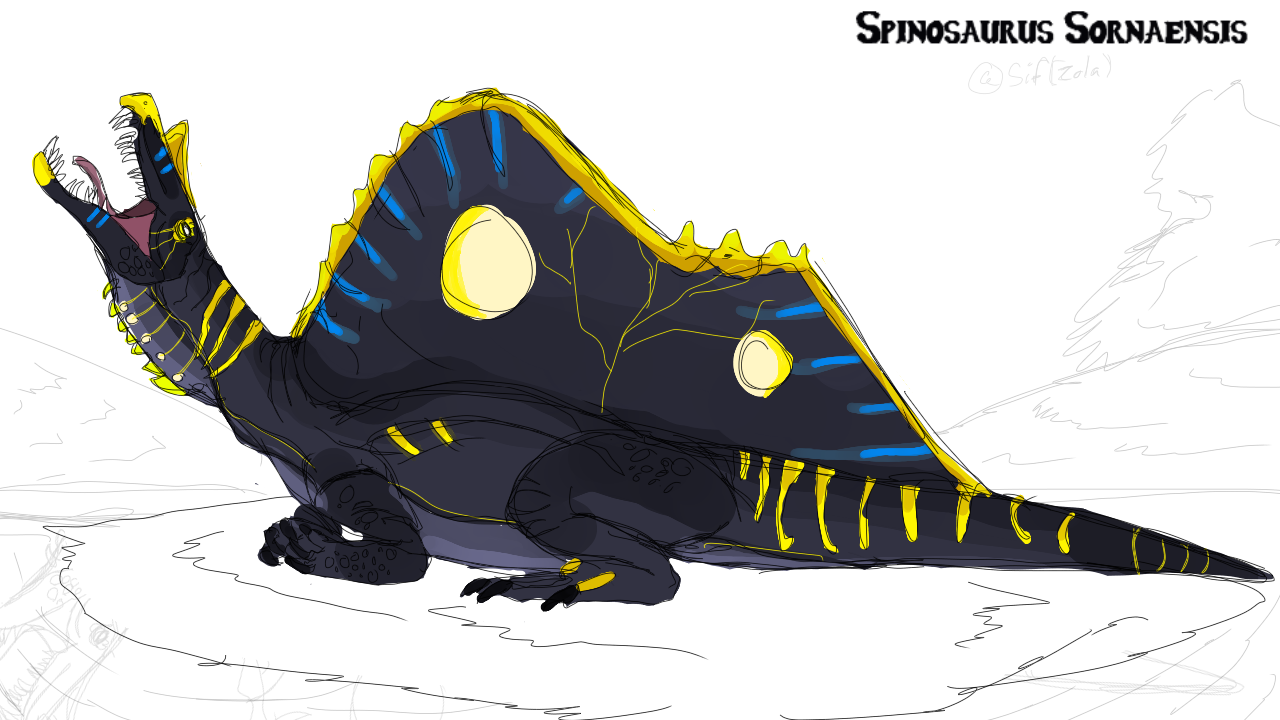Species Spinosauus SornaensisOriginal sample genome: s. Aegyptiacus | |
| |
Identifier: SPIN-YY-#### |
carnivore |
Family Spinosauridae |
Suborder Theropoda |
The gene sequence and first successful breeding of this species took place at Isla Sorna (InGen Complex Site B) |
|
50′ (15m) Long, 16′ (5m) Tall |
40,000 lbs |
Measured Speed: |
|
Terrain Preference Is Primarily Marsh/River |
|
Preference of Diet Is Fish, both fresh and saltwater |
|
Quite crocodilian in nature, Spinosaurus is one of the largest carnivores to ever live measuring longer than a full size school bus (Although our Spinosaurs are still only about half that size). They are easily recognized by their long flat head and the tall (up to 6′) spiny sail upon their back which is used both in mating displays and body temperature regulation. Unlike most species on the island they are only semi-homeothermic and rely on external heat sources, otherwise they are sluggish. On a sunny day they can easily outrun a T-Rex.
Spinosaurs are semi-aquatic piscavores, most of their diet consisting of fish although they can survive on red meat. Because of this our assets are provided with modified implants that provide a faint electrical shock that grows stronger the farther from the island they travel, a training impulse to prevent escape. The tranquilizer will release and force drowning at 50 miles from a signal beacon to prevent unlikely escape to other islands.
As with the Tyrannosaurus, our Spinosaurus Sornaensis genome was provided as part of a package agreement in exchange for helping capture International Genetics Corporation assets on Isla Nublar in preparation for Jurassic World construction in the early 2000s since SCGC has more experience in that field. Because of this, the dinosaur is named for its original development location Isla Sorna. InGen liquidated their only Spinosaurus asset from that island in 2004, all assets on Isla Panadero were hatched in Brazil or on location.
In honor of the base genome Aegyptiacus, the 2008 male breeding project attempted to develop a veining pattern resembling the Nile Delta. The third specimen (pictured above) proved to develop such a pattern and was retained out of the batch.
These dinosaurs can be extremely aggressive and territorial toward humans and larger creatures but do not seem bothered by smaller species. Social structure appears to be female-dominant with each female claiming large territories while males claim smaller territories which overlap or are contained within the female’s territory. Males then have been observed as being tolerated and seem to compete in both combat against one another and positive gestures toward the territory female, although it has not yet been determined if these actions are for the right to mate or simply for favor and permission to keep their territory.
Current Specimens:
| SPIN- | NICK | SEX | KEY |
| 05-008 | M | G | |
| 06-005 | F | G | |
| 08-003 | Surge | M | A |
| 09-002 | F | D,P | |
| 11-044 | Makaira | F | D,P,G |

